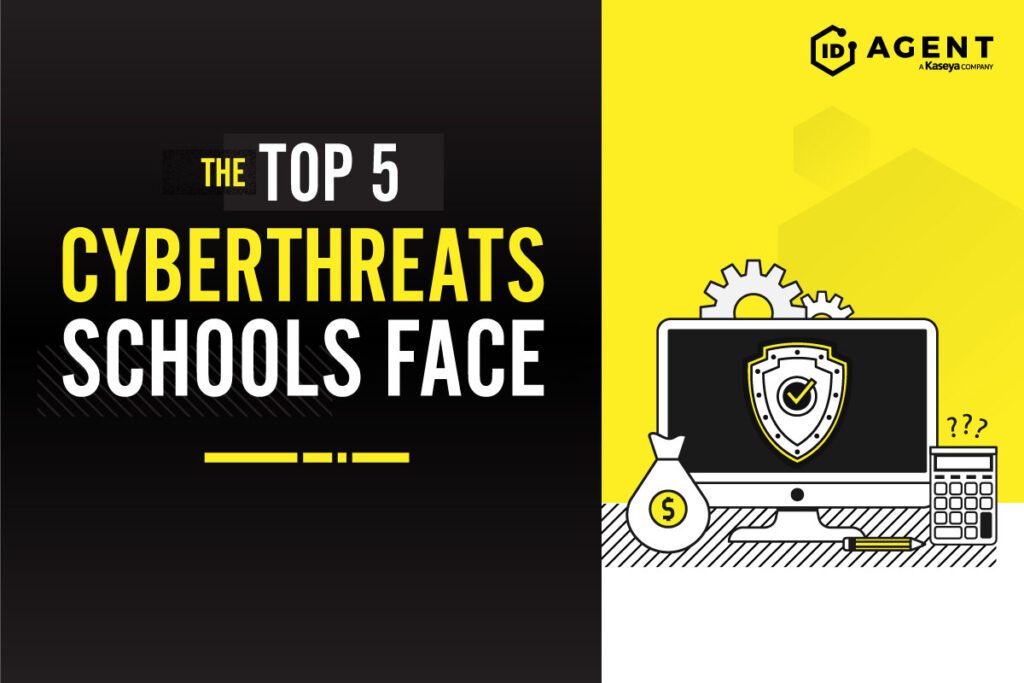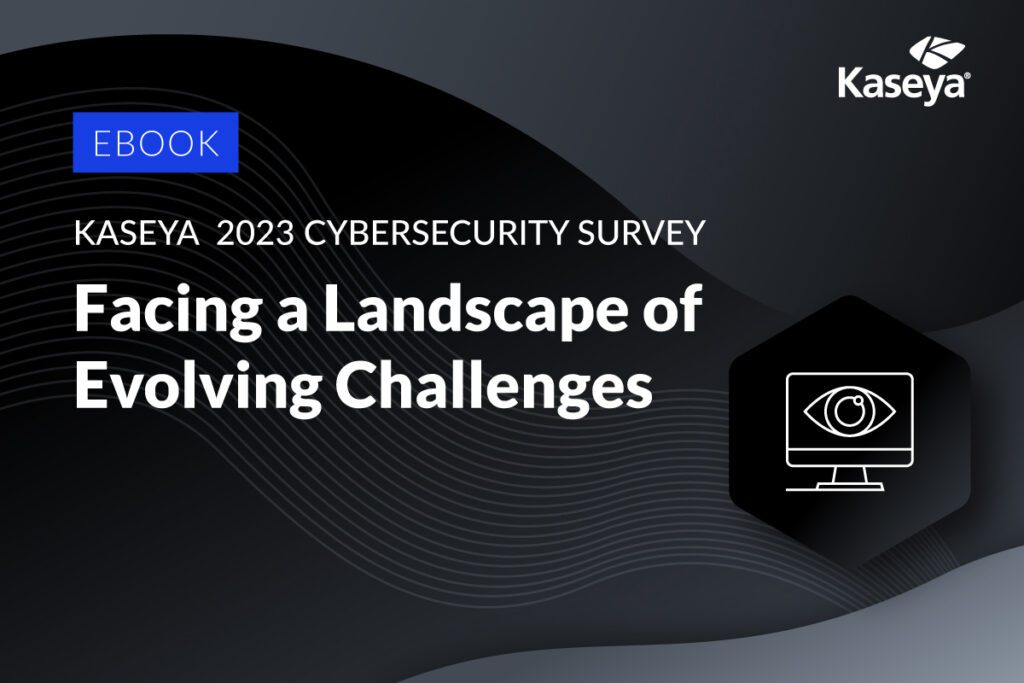Everything You Need to Know About AI Phishing Scams

As technology continues to advance at a rapid pace, so do the tactics used by cybercriminals to deceive and defraud unsuspecting victims. One such emerging threat is AI phishing scams, where cybercriminals leverage artificial intelligence (AI) technology to orchestrate sophisticated and convincing phishing attacks. Kiplinger named AI-enhanced scams one of the top five frauds for 2024. In this blog post, we’ll delve into the world of AI phishing scams, exploring how they work, the risks they pose, and how individuals and organizations can protect themselves against this evolving threat.

Is building an in-house SOC a smart move? Our whitepaper breaks down the costs. READ IT>>
You should be worried about AI phishing scams
Cybercriminals are increasing cyberattack pressure on businesses and their supply chains, and they’re not hesitating to become early adopters of AI technology to do it. AI phishing scams involve the use of AI-powered tools and techniques to create highly personalized and convincing phishing emails, messages or websites. These scams often employ natural language processing (NLP), machine learning algorithms and other AI technologies to analyze vast amounts of data about potential victims and craft targeted phishing messages that are tailored to exploit their vulnerabilities and preferences.
AI phishing scams pose significant risks to individuals and organizations alike. By leveraging AI technology, cybercriminals can create highly convincing and targeted phishing attacks that are difficult to detect and mitigate using traditional security measures. In a survey by Nationwide Insurance, more than 50% of consumer respondents said that they are worried about AI-enhanced cyberattacks — and they should be.

Learn about the top cyber threats K-12 schools face and how to mitigate them. DOWNLOAD INFOGRAPHIC>>
5 key elements of an AI phishing scam
Phishing scams created using AI tools like ChatGPT and other generative AI tend to follow similar patterns to traditional phishing. The key difference between today’s phishing scams and the scams we’ve seen in the past lies in the sophistication of the lures. AI phishing scams are much more dangerous now than phishing attacks of the past.
- Data collection: This element hasn’t changed much. To conduct effective phishing scams, bad actors collect vast amounts of data about potential victims from various sources, including social media profiles, dark web forums and public databases. This data may include personal details, interests, affiliations and online behaviors. AI tools can help cybercriminals refine the data to tighten their targeting.
- Analysis and personalization: AI algorithms analyze the collected data to identify patterns, preferences and potential vulnerabilities of the target individuals. Using this information, cybercriminals can personalize phishing messages to make them appear more authentic and convincing, increasing the likelihood of success.
- Social engineering tactics: AI phishing scams often employ sophisticated social engineering tactics to manipulate emotions and elicit specific responses from victims. These tactics may include using urgency or fear-inducing language, creating fake personas or organizations, and mimicking trusted sources or authority figures.
- Carefully crafting the lure: This is the step in the process where AI is a game changer. In the past, bad grammar, misspellings and language usage errors were key hallmarks of phishing. However, using generative AI like ChatGPT enables cybercriminals to virtually eliminate those red flags, making their phishing messages much harder to detect.
- Automation and scale: AI technology enables cybercriminals to automate various aspects of the phishing campaign, including email generation, distribution and response handling. This allows them to target a large number of individuals simultaneously while minimizing manual effort and maximizing efficiency.

See the challenges companies face & how they’re overcoming them in our Kaseya Security Survey Report 2023 DOWNLOAD IT>>
Protecting against AI phishing scams
Sophisticated AI-driven scams can be wickedly difficult for potential victims to spot. These scams lead to financial loss, data breaches, identity theft and reputational damage, with far-reaching implications for victims and organizations. However, there are a few things that organizations can do to mitigate their risk.
- Cybersecurity awareness: Educate everyone in the organization about the dangers of AI phishing scams and the importance of staying vigilant against suspicious emails, messages and websites.
- Anti-phishing tools: Utilize anti-phishing tools and email security solutions that incorporate AI and machine learning algorithms to detect and block phishing attempts in real-time.
- Email authentication: Implement email authentication protocols, such as SPF, DKIM and DMARC, to verify the authenticity of incoming emails and prevent email spoofing and domain impersonation.
- Regular training and simulation: Conduct regular phishing awareness training sessions and simulated phishing exercises to educate employees about common phishing tactics and how to recognize and report suspicious emails.
- Multifactor authentication (MFA): Enable multifactor authentication (MFA) for all sensitive accounts and systems to add an extra layer of security and protect against unauthorized access, even if credentials are compromised.

Learn how to spot today’s most dangerous cyberattack & get defensive tips in Phishing 101 GET EBOOK>>
Phishing isn’t the only vector for AI-enhanced cyberattacks
In recent years, the intersection of artificial intelligence (AI) and cybersecurity has given rise to a new era of cyber threats. While phishing remains a prevalent form of attack, cybercriminals are increasingly leveraging AI technology to orchestrate sophisticated and highly targeted cyberattacks across various fronts.
1. Malware and advanced persistent threats (APTs)
Malware authors and APT groups are harnessing the power of AI to develop more evasive and adaptive malware strains. AI-powered malware can dynamically adjust its behavior in response to changes in its environment, making it harder to detect and analyze using traditional security tools. These advanced malware variants can evade signature-based detection methods and even learn from their interactions with security systems to improve their evasion techniques over time. Generative AI has enabled bad actors to create new malware faster than ever before. In 2007, there were an estimated 8 million pieces of malware in circulation. That number has increased exponentially to over 1 billion pieces of malware available on the dark web in 2023.
2. Exploitation of vulnerabilities
AI can be used to automate the process of identifying and exploiting vulnerabilities in software and systems. Vulnerability scanners powered by AI algorithms can analyze code and network configurations to identify potential weaknesses that can be exploited by cybercriminals. Furthermore, AI-based exploit generation techniques can automatically craft sophisticated exploits tailored to specific vulnerabilities, enabling attackers to launch targeted attacks with greater efficiency and effectiveness.

Learn how Datto EDR satisfies cyber insurance requirements for endpoint protection & EDR. DOWNLOAD REPORT>>
3. Social engineering and manipulation
AI technologies, such as natural language processing (NLP) and deep learning, are increasingly being used to enhance social engineering tactics employed in cyberattacks. Cybercriminals can leverage AI to analyze vast amounts of data about potential victims, including their online behavior, interests and social connections, to craft highly convincing and personalized phishing emails, social media messages and other social engineering lures. These AI-enhanced social engineering tactics can significantly increase the success rate of phishing attacks and other forms of social engineering.
4. Insider threats and data exfiltration
Insider threats pose a significant risk to organizations, with employees or insiders leveraging their access to sensitive information to steal data or sabotage systems. AI-powered monitoring and anomaly detection systems can analyze user behavior and network activities to identify suspicious or anomalous behavior indicative of insider threats. Furthermore, AI can be used to automate the exfiltration of stolen data, enabling attackers to covertly transfer sensitive information out of the organization without detection.
5. Distributed Denial-of-Service (DDoS) attacks
AI is also being used to enhance the capabilities of DDoS attacks, which aim to disrupt the availability of online services by overwhelming target systems with a flood of malicious traffic. AI-powered DDoS attacks can dynamically adapt their attack vectors and techniques in real-time based on the target’s defenses, making them more resilient and challenging to mitigate. Additionally, AI can be used to orchestrate large-scale botnets comprised of compromised devices, amplifying the impact of DDoS attacks.

Explore the nuts and bolts of ransomware and see how a business falls victim to an attack. GET EBOOK>>
Mitigate AI-enhanced cyberattacks with AI-enabled security solutions
However, the bad guys aren’t the only players on the field with AI-enhanced tools. Defenders can choose from a wide array of AI-enabled security solutions too. Here are a few ways AI-powered security tools can benefit businesses:
Advanced threat analysis: AI-powered threat detection solutions can analyze large volumes of data and identify anomalous behavior indicative of cyberthreats.
Malware detection: AI-powered systems can analyze code and behavior to identify and classify malware, including new and previously unknown threats.
Behavioral analysis: AI can monitor and analyze user behavior to identify deviations from normal patterns that may indicate unauthorized access or malicious activity.
Predictive analysis: AI algorithms can analyze historical data to predict potential security threats or vulnerabilities, allowing organizations to proactively strengthen their defenses.

Follow the path to see how Managed SOC heroically defends businesses from cyberattacks. GET INFOGRAPHIC>>
Automated response: AI can automate responses to security incidents, such as quarantining infected devices, blocking suspicious traffic, or applying patches to vulnerable systems.
Phishing detection: AI-powered systems can analyze emails and websites to detect phishing attempts, including spoofed domains, suspicious links and malicious attachments.
Endpoint security: AI can protect endpoints (e.g., laptops, desktops, mobile devices) by detecting and mitigating malware, ransomware and other threats in real time.
Security analytics: AI can analyze large volumes of security data (e.g., logs, events, alerts) to identify patterns, trends and anomalies that may indicate security incidents or vulnerabilities.
Threat intelligence: AI can analyze threat intelligence feeds from various sources to identify emerging threats, tactics and techniques used by cyberattackers.

Learn more about growing supply chain risk for businesses and how to mitigate it in a fresh eBook. DOWNLOAD IT>>
Kaseya’s Security Suite Helps Businesses Mitigate All Types of Cyber Risk Affordably
Kaseya’s Security Suite has the tools that MSPs and IT professionals need to mitigate AI phishing risk effectively and affordably, featuring automated and AI-driven features that make IT professionals’ lives easier.
BullPhish ID — This effective, automated security awareness training and phishing simulation solution provides critical training that improves compliance, prevents employee mistakes and reduces a company’s risk of being hit by a cyberattack.
Dark Web ID — Our award-winning dark web monitoring solution is the channel leader for a good reason: it provides the greatest amount of protection around with 24/7/365 human and machine-powered monitoring of business and personal credentials, including domains, IP addresses and email addresses.
Graphus — Automated email security is a cutting-edge solution that puts three layers of AI-powered protection between employees and phishing messages. It works equally well as a standalone email security solution or supercharges your Microsoft 365 and Google Workspace email security.
Kaseya Managed SOC powered by RocketCyber — Our managed cybersecurity detection and response solution is backed by a world-class security operations center that detects malicious and suspicious activity across three critical attack vectors: endpoint, network and cloud.
Datto EDR — Detect and respond to advanced threats with built-in continuous endpoint monitoring and behavioral analysis to deliver comprehensive endpoint defense (something that many cyber insurance companies require).
Vonahi Penetration Testing – How sturdy are your cyber defenses? Do you have dangerous vulnerabilities? Find out with vPenTest, a SaaS platform that makes getting the best network penetration test easy and affordable for internal IT teams.
Learn more about our security products, or better yet, take the next step and book a demo today!

Read case studies of MSPs and businesses that have conquered challenges using Kaseya’s Security Suite. SEE CASE STUDIES>>

Our Partners typically realize ROI in 30 days or less. Contact us today to learn why 3,850 MSPs in 30+ countries choose to Partner with ID Agent!
Check out an on-demand video demo of BullPhish ID or Dark Web ID WATCH NOW>>
See Graphus in action in an on-demand video demo WATCH NOW>>
Book your demo of Dark Web ID, BullPhish ID, RocketCyber or Graphus now!